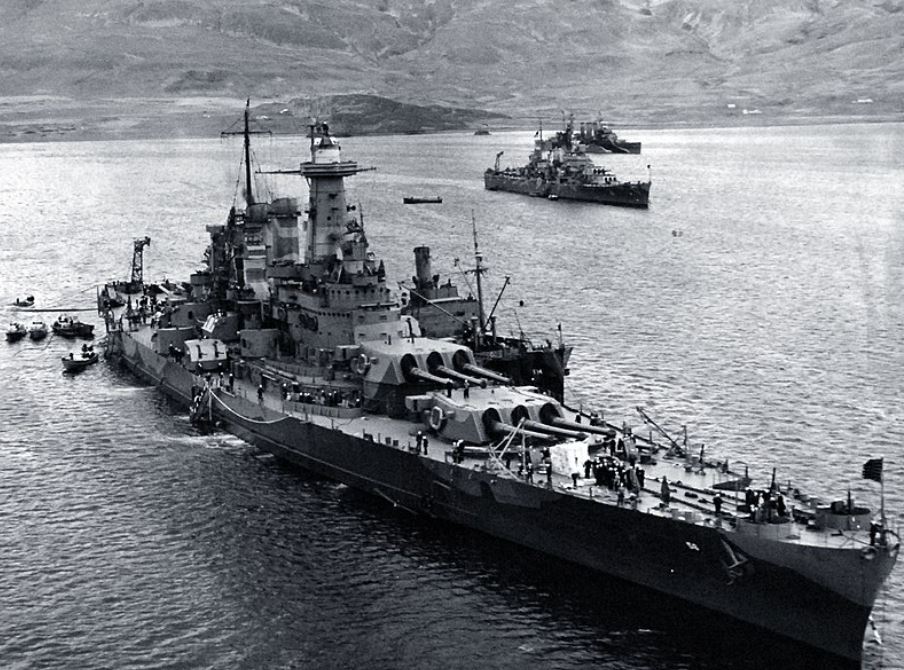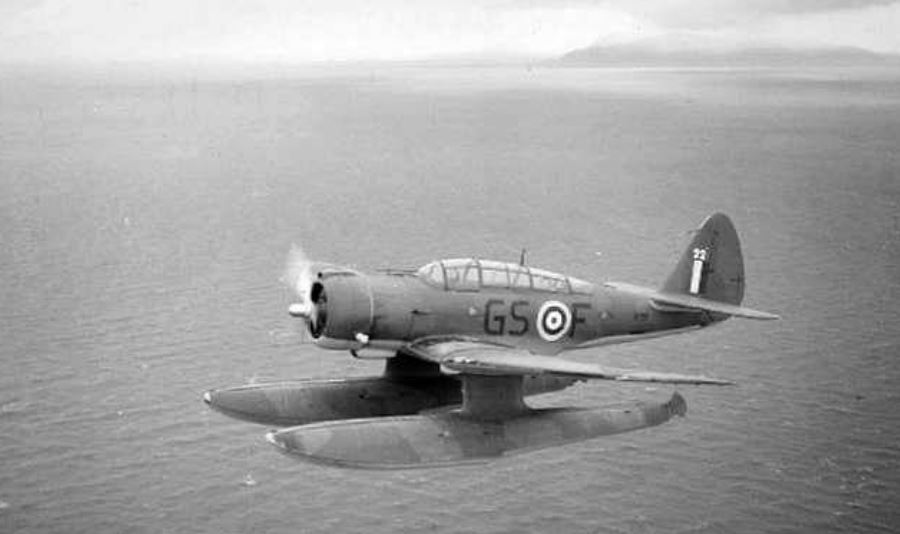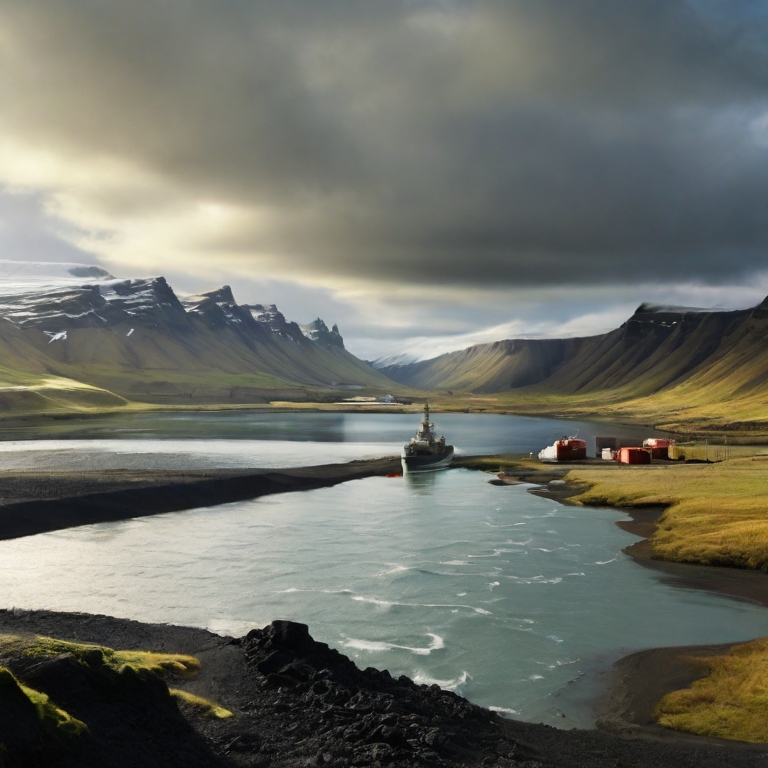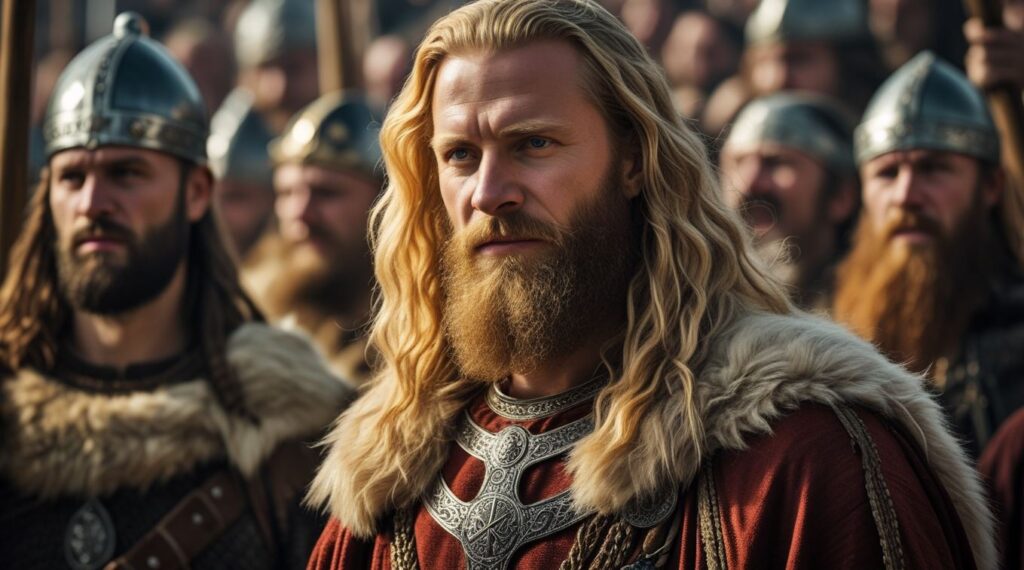What Role did Iceland Play in World War 2?
Despite its seemingly isolated location in the North Atlantic and having declared neutrality, Iceland found itself in the middle of a complex strategic position during World War 2.
Its strategic location within the Atlantic, coupled with its unique geopolitical status, transformed Iceland from a peaceful haven into a crucial player in the Allied war effort.
This article explores the role that Iceland played during this pivotal period, shedding light on its contributions to Allied victory and the enduring legacy it left on the nation’s history and identity.
- 1. Iceland's Historical Relationship with Denmark
- 2. Iceland's Strategic Importance in the Battle of the Atlantic
- 3. Allied Offer and Icelandic Neutrality
- 4. Operation Valentine and the British Occupation of the Faroe Islands
- 5. Operation Fork: The British Invasion of Iceland
- 6. Icelandic Protests on the Infringement of Independence
- 7. Social and Economic Changes, Including Infrastructure Projects
- 8. Promises of Occupation Only Until Germany's Surrender
- Final Thoughts: Iceland's Role in World War 2
- FAQs: Iceland during World War 2
- Further Reading
1. Iceland’s Historical Relationship with Denmark
Iceland’s historical relationship with Denmark dates back centuries, shaping the nation’s identity and political trajectory.
Before World War 2, Iceland and Denmark were bound by a deep connection.
Iceland’s status as a Danish colony for over six centuries influenced its culture, language, and institutions. The Danish language became the official language of Iceland, and Danish influence permeated all aspects of Icelandic society.
In 1918, Iceland took a significant step towards independence by negotiating a personal union with Denmark. This agreement granted Iceland extensive autonomy in domestic affairs, while Denmark retained control of foreign policy and defense.
The Act of Union was a pivotal moment in Iceland’s history, marking the beginning of its journey towards full sovereignty.
Icelanders gradually assumed greater responsibility for their own affairs, developing their own institutions and shaping their own destiny.
Despite the growing autonomy, Iceland maintained close ties with Denmark. The two nations shared a common monarch and a deep cultural affinity.
The lessons learned during the personal union with Denmark would prove invaluable as Iceland navigated the challenges of World War 2 and emerged as a sovereign nation.
Fears and Challenges Following the German Invasion of Denmark
The German invasion of Denmark in April 1940 sent shockwaves through Iceland, a nation closely tied to its Danish neighbor.
The tranquillity that had defined Iceland’s existence before World War 2 was abruptly shattered, replaced by a sense of fear and uncertainty.
The invasion severed Iceland’s vital links to Denmark, its former sovereign power.
This sudden rupture left Iceland in a precarious position, with a real threat of German occupation casting a dark shadow over the nation.
Iceland’s strategic location in the North Atlantic made it a tempting target for German expansion. The island’s proximity to Allied shipping lanes and its potential as a base for military operations were not lost on the German high command.
Beyond the immediate threat of invasion, Iceland faced a number of challenges, namely:
- Economy: The disruption of trade with Denmark, its primary economic partner, had severe repercussions for the nation’s economy. Shortages of essential goods became commonplace, and the cost of living soared.
- Immigration: The influx of refugees from Denmark and other occupied countries further strained Iceland’s limited resources. The nation’s infrastructure, already stretched thin, struggled to accommodate the sudden increase in population.
The German invasion of Denmark forced Iceland to confront the harsh realities of war and the fragility of its sovereignty.
2. Iceland’s Strategic Importance in the Battle of the Atlantic

Iceland’s strategic importance in the Battle of the Atlantic cannot be overstated.
Its location, astride the vital shipping lanes between North America and Europe, made it strategically essential in the Allied war effort, namely:
- German U-boats prowled the Atlantic, seeking to sever the lifeline of supplies and reinforcements flowing to Britain and the Soviet Union.
- Iceland’s proximity to these shipping lanes made it an ideal base for Allied anti-submarine operations and hunting down German submarines.
- Allied warships and aircraft operating from Iceland could patrol vast stretches of the Atlantic, providing protection for convoys.
3. Allied Offer and Icelandic Neutrality

British Invitation to Iceland as an Equal Ally
In the face of escalating tensions and the looming threat of German occupation, Britain extended a significant and unprecedented invitation to Iceland on April 9, 1940.
Recognizing Iceland’s strategic importance, Britain proposed a partnership, treating Iceland as an equal ally.
The offer included promises of independence and protection in exchange for permission to establish military bases on Icelandic soil.
This diplomatic move aimed to secure Iceland’s allegiance in the war unfolding in the North Atlantic.
Iceland’s Declaration of Neutrality and Rejection of the British Offer
Despite the offer from Britain, Iceland chose a path of neutrality.
On April 10, 1940, Iceland declared its intention to remain neutral in the conflict, aligning its stance with that of Denmark.
The rejection of the Allied offer marked a pivotal moment, as Iceland sought to navigate the stormy waters of World War 2 with a commitment to non-engagement.
Consequences of Maintaining Neutrality in a War-Torn Europe
Iceland’s decision to maintain neutrality in World War 2 had far-reaching consequences for the nation.
One of the most immediate challenges was the threat of invasion.
Both the Allies and the Axis powers recognized Iceland’s strategic importance, and there were concerns that the island could become a target for military action.
To mitigate this risk, Iceland relied on a combination of diplomacy and deterrence. The government maintained a policy of strict neutrality, avoiding any actions that could be seen as favoring one side or the other. Iceland also worked closely with the United States, which provided military assistance and protection.
Another consequence of neutrality was Iceland’s limited ability to influence the course of the war.
As an observer, Iceland had no say in the major decisions that were shaping the conflict. This could be frustrating for a nation that was directly affected by the war, but Iceland’s leaders recognized that their primary goal was to protect the nation’s sovereignty and independence.
Despite the challenges, Iceland’s neutrality also brought some benefits. The nation was able to avoid the devastation that engulfed much of Europe during the war. Iceland’s economy remained relatively stable, and the standard of living for its citizens was higher than in many other countries.
4. Operation Valentine and the British Occupation of the Faroe Islands
Operation Valentine in the Faroe Islands set the scene for Iceland’s involvement in World War 2.
Operation Valentine was a British military operation that resulted in the occupation of the Faroe Islands during World War 2.
The operation was launched on April 12, 1940, in response to the German invasion of Denmark, which had previously controlled the Faroe Islands.
The British occupation of the Faroe Islands was a strategic move to prevent Germany from gaining a foothold in the North Atlantic. The islands were located in a key position between the United Kingdom and Iceland, and they provided a valuable base for Allied naval and air operations.
The operation was carried out by a small force of British Royal Marines and sailors, who landed on the Faroe Islands without encountering any resistance. The British quickly established control of the islands and set up a military administration.
The British occupation of the Faroe Islands lasted for over five years. During this time, the British worked to strengthen the islands’ defenses and to improve the living conditions of the Faroese people.
The operation helped to prevent Germany from gaining a strategic foothold in the North Atlantic, and it also helped to strengthen the ties between the Faroe Islands and the United Kingdom.
5. Operation Fork: The British Invasion of Iceland
Operation Fork, the British invasion of Iceland, was a complex and challenging operation that was carried out with a sense of urgency and, at times, haphazard decision-making.
The Royal Marines were tasked with the invasion, but they faced a number of challenges, including:
- Language barriers: The Royal Marines did not have any fluent Icelandic speakers among them, which made communication and coordination difficult. This was a major obstacle, as the British needed to be able to communicate with the Icelandic people in order to explain their mission and to gain their cooperation.
- Limited resources: The Royal Marines were not well-equipped for the task at hand. They had limited supplies of food, water, and ammunition, and they were not properly trained for the cold and harsh conditions of Iceland.
- Unexpected resistance: The British expected the Icelanders to welcome them as liberators, but they were met with some resistance. The Icelandic government initially refused to cooperate with the British, and there were a number of small-scale clashes between British and Icelandic forces.
Despite these challenges, the Royal Marines were able to successfully occupy Iceland. They quickly established control of the major towns and cities, and they were able to persuade the Icelandic government to cooperate with them.
The only casualty of the entire operation occurred during a suicidal incident. A British soldier, Private Thomas Brown, shot himself in the head after becoming overwhelmed by the stress of the operation.
Limited Resistance During the British Invasion
The resistance to the British invasion of Iceland was limited, but there were a number of small-scale clashes between British and Icelandic forces.
The most significant act of resistance occurred on the morning of May 10, 1940, when a group of Icelandic police officers attempted to prevent the British from landing at Reykjavík harbor. The police officers fired on the British ships, but they were quickly overwhelmed by the superior firepower of the British.
There were also a number of other incidents of resistance, including:
- Icelandic civilians throwing rocks and bottles at British soldiers.
- Icelandic fishermen cutting the nets of British fishing boats.
- Icelandic farmers refusing to sell food to the British.
- Icelandic workers going on strike.
However, the Icelandic resistance was never able to mount a serious challenge to the British occupation.
As a result, the British were able to quickly establish control of Iceland. The resistance was sporadic and ineffective, and it was eventually suppressed by the British.
6. Icelandic Protests on the Infringement of Independence

The Icelandic government’s initial response to the British invasion was one of protest.
The government issued a formal protest to the British government, and it also appealed to the United States for help.
However, the Icelandic government was in a weak position. Iceland was a small and isolated country, and it was surrounded by British warships. The Icelandic government knew that it could not resist the British invasion by force, so it decided to cooperate with the British in the hope of minimizing the damage to Iceland’s independence.
The Icelandic government agreed to allow the British to land troops in Iceland and to use Icelandic ports and airfields. However, the government also made it clear that it did not recognize the British occupation as legitimate.
The government refused to allow the British to take control of Iceland’s government or to interfere in Iceland’s internal affairs.
The Icelandic government’s response to the British invasion was a delicate balancing act. The government wanted to protect Iceland’s independence, but it also wanted to avoid provoking the British.
7. Social and Economic Changes, Including Infrastructure Projects
The social and economic changes that occurred in Iceland during the occupation period were significant.
Social changes:
- The influx of foreign troops led to a unique cultural exchange. The British soldiers brought with them their own customs and traditions, which influenced Icelandic society. For example, the British soldiers introduced Icelanders to new sports, such as football and cricket.
- The relationships between foreign soldiers and Icelandic women were a source of controversy. Some Icelanders saw these relationships as a betrayal of their country, while others saw them as a way to improve their lives.
- The British also introduced Icelanders to new music and dance styles. This led to the development of Iceland’s unique music and dance scene.
- As a result of the occupation, Icelanders became more aware of the outside world and more open to new ideas.
Economic changes:
- The occupation spurred infrastructure projects initiated by the occupying forces. The British built roads, bridges, hospitals, and airfields, which improved Iceland’s infrastructure and helped to boost the economy.
- The roads and bridges that built by the British made it easier for local people to travel around the country.
- The airfields that were built by the British helped to make Iceland a strategic location for military operations. This led to the development of Iceland’s defense industry.
- The British also provided Iceland with food and other supplies during the war. This helped to improve the standard of living in Iceland and to prevent a humanitarian crisis.
The social and economic changes that occurred in Iceland during the occupation period had a lasting impact on the nation.
8. Promises of Occupation Only Until Germany’s Surrender

As the occupation progressed, changes in the garrison further shaped the dynamics between the occupying forces and Iceland.
In 1942, the Royal Marines were replaced by a garrison of 4,000 Canadian soldiers, marking a shift in the military presence on the island.
The promises made by the British authorities, assuring that the occupation would be temporary and last only until Germany’s surrender, became a focal point of public attention.
The evolving nature of the garrison and the assurances provided played a crucial role in shaping Icelandic perspectives and responses during this period of foreign occupation.
Final Thoughts: Iceland’s Role in World War 2
Iceland’s role in World War 2 was unique.
Despite its small size and neutral status, Iceland played a significant role in the Allied war effort. Iceland’s strategic location in the North Atlantic made it a vital base for Allied shipping and air operations. The country also provided valuable intelligence to the Allies and helped to protect the North Atlantic shipping lanes from German attack.
Iceland’s contributions to the Allied victory should not be underestimated. The country’s strategic location, its willingness to cooperate with the Allies, and its resilience in the face of adversity all played a role in helping to defeat Nazi Germany.
In the aftermath of the war, Iceland emerged as a sovereign and independent nation. The country’s wartime experiences had a profound impact on its national identity and its foreign policy.
FAQs: Iceland during World War 2
1. Was Iceland Bombed in World War 2?
No, Iceland was not directly bombed during World War 2. While the threat of German invasion prompted the British occupation of the island in 1940, strategic considerations and Iceland’s remote location shielded it from the direct aerial attacks that many European nations experienced during the war.
2. Why Did the UK Invade Iceland?
The United Kingdom’s invasion of Iceland in 1940, known as Operation Fork, was driven by strategic concerns in the Battle of the Atlantic. Iceland’s key geographical location provided an advantageous position for controlling vital sea routes. The British sought to preclude a potential German occupation and secure Icelandic cooperation by establishing a military presence on the island.
3. Was Iceland Safe in World War 2?
Iceland navigated World War 2 relatively unscathed in terms of direct military actions. While the British occupation brought about changes and tensions, the island did not witness the same level of destruction experienced by many mainland European nations. The commitment to neutrality, though challenged, contributed to Iceland’s safety during the conflict.
4. Who Did Iceland Fight for in World War 2?
Iceland maintained a policy of neutrality during World War 2. Despite the British occupation, Iceland did not actively fight as a belligerent. The nation sought to navigate the war without aligning itself with either the Axis or the Allies, aiming to safeguard its independence amidst the global conflict.
5. How Did the Occupation Impact Icelandic Society?
The occupation left a significant impact on Icelandic society, bringing about social, economic, and cultural changes. The influx of foreign troops, relationships between locals and occupying forces, and infrastructure projects altered the fabric of Icelandic life. Tensions emerged, but Iceland’s unique response and eventual declaration of independence in 1944 shaped its identity in the aftermath of the war.







